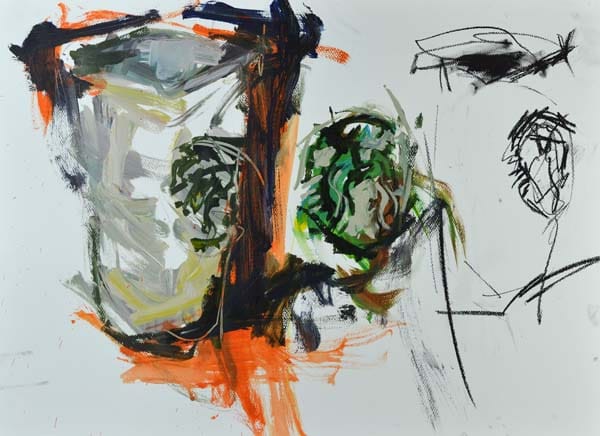Don't Focus on Finished Art, Do This!
Finished art can trap you in safe habits. This loose & expressive lesson shows why exploration, doodling, and playful risk-taking lead to stronger, freer painting.

In the garage studio, I’ve learned something the hard way: if you only ever chase finished paintings, you get stuck. Your brush repeats what it already knows, and your art loses its edge. The secret to painting loose and expressive isn’t grinding toward a perfect end result — it’s giving yourself permission to explore.
This lesson is about flipping that mindset. Forget the final product for a while. Instead, dig into play, discovery, and risk-taking. That’s where growth happens.
Why Exploration Beats “Finished”
When you sit down aiming for a polished painting, your body defaults to safe habits. You cling to familiar brushstrokes, familiar color choices, familiar techniques.
Exploration pushes you out of that comfort zone:
- Try bold color swaps (orange underpainting, teal shadows).
- Test edges with charcoal, crayons, or liner brushes.
- Scribble into shadows, then carve back with lighter passes.
👉 These sessions may look messy, but they train your brain to remember new options, so when you do paint seriously, you’ve got more tools to work with.
Looking for more acrylic tips, free courses, and tutorials?
Check out the Acrylic Hub — your one-stop guide for everything from beginner basics to advanced techniques.

The Starbucks Cup Example
In this demo, I grabbed a coffee cup and treated it as a playground, not a project.
- Started with splashes of teal, orange, and yellow.
- Explored light/shadow shapes without worrying about accuracy.
- Painted around the logo with dark values, then carved details back in later.
- Added a quick charcoal sketch of the lid, even threw in “coffee” on top.
None of it was “finished.” But the exercise gave me confidence, ideas, and freedom I wouldn’t have found chasing a perfect replica.
Garage Studio Drill
Exploration Sketch (15–20 minutes)
- Pick an everyday object (coffee cup, tube of paint, hammer).
- Start with an unexpected underpainting color.
- Explore: exaggerate a shadow, ignore a detail, test a tool.
- Add something playful — charcoal line, bold mark, or color risk.
The goal: discover something new, not create a masterpiece.
Why This Works
- Reduces pressure → you stay loose, not stiff.
- Encourages risk-taking → new techniques surface naturally.
- Strengthens connection → the more you doodle with a subject, the better you know it when it’s time for a finished piece.
In short: exploration is discovery time. Finished art has its place, but freedom and growth live in the messy in-between.
Learn & Improve Your Acrylic Skills
- Acrylic Hub– Your go-to guide for tutorials, tips, and resources.
- Subscribe for More Great Content - Get tutorials, tips, and updates straight to your inbox.
- Follow Me on Pinterest - Daily inspiration, tips, and fresh ideas.
Recommended Acrylic Painting Materials
-
Princeton Catalyst Brushes – Flats (#6, #12), Rounds (#4, #8), Fan (#4), Liner Brush
Durable synthetic bristles for versatile acrylic techniques -
Liquitex Heavy Body Acrylic Paint – Essential Colors
Cadmium Yellow, Yellow Ochre, Alizarin Crimson, Cadmium Red Light, Ultramarine Blue, Cobalt Blue, Burnt Sienna, Titanium White -
Winsor & Newton Cotton Canvas
Reliable stretched canvas for studio and plein air work -
Strathmore 400 Series Mixed Media Paper
Heavyweight, acid-free paper for acrylic and mixed media -
Fabriano Artistico 140lb Cold Press Paper
Excellent for acrylic, mixed media, and textured effects -
Blick Multi-Colored Painting Knife Set
Variety of shapes for texture, scraping, and bold strokes - Miscellaneous: Two pint-sized water containers, paper towels (from Home Depot or Walmart)
- Note: I use canvas or sturdy cardboard as my palette — no store-bought palettes needed.




